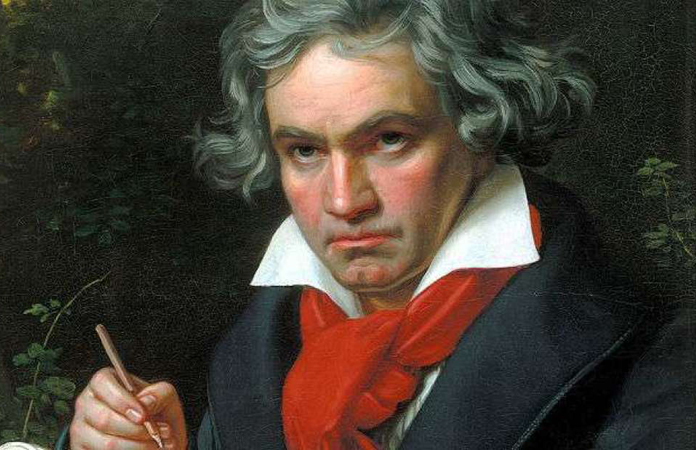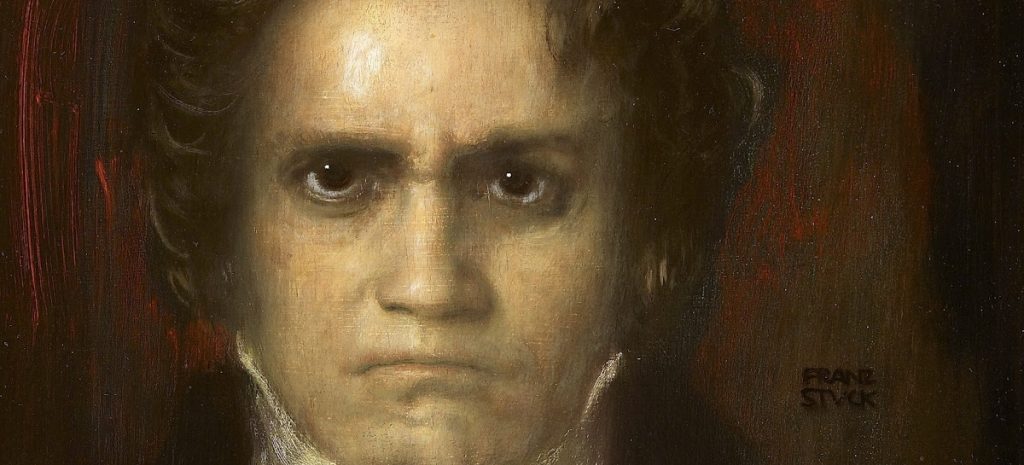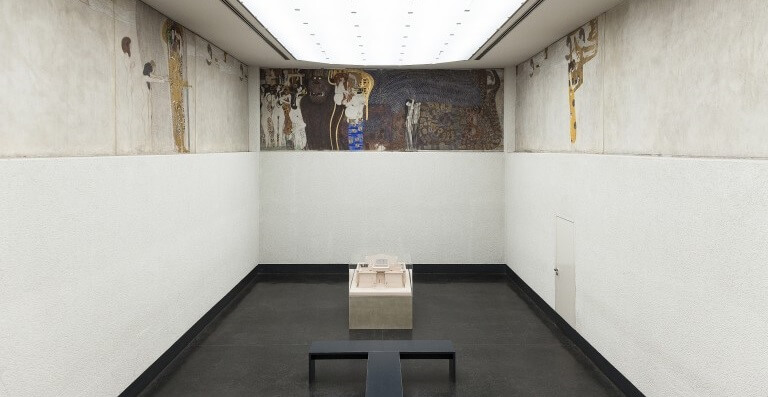- Intense, Beautiful, Impactful

If you’ve ever heard a classic intro as intense as thunder, that is probably Beethoven’s fifth symphony, published in 1808. The symphony, and the four-note opening motif in particular, are known worldwide. The motif frequently appears in popular culture, from disco versions to rock and roll covers to film and television use. But like Symphony No. 9, he also created a full of joy to commemorate the victory of love and art.
These colorful melodies touched the hearts of artists.
2. They also knew that it was masterpiece
Beethoven’s iconic visage and his timeless music have been the inspiration for artists through the centuries. The beginning of the 20th Century was the peak time for the ‘cult of Beethoven.’ His genius was being roundly and widely celebrated amongst artists, sculptors, and other musicians.


Beethoven’s later work has been called ‘heroic’ in style, and Franz von Stuck certainly wanted to lionize the man. The composer here fixes the viewer with an unwavering stare, like he’s looking into our souls.
3. Can you paint a picture of music?

Beethoven Frieze was painted by Klimt in 1902 for the 14th Vienna Secessionist exhibition, which was intended to be a celebration of the composer. the frieze was painted directly on the walls with light materials. (source)

After the exhibition the painting was preserved, although it did not go on display again until 1986. The Beethoven Frieze is now on permanent display in the Vienna Secession Building. (source)
The most strange and wonderful of all the artistic responses to Beethoven’s work did come from the early 1900s in Europe, by the hand of Gustav Klimt. Painted for the 1902 Viennese Secession, Klimt’s frieze devotes four whole walls to the composer’s genius.
Based on Wagner’s interpretation of Beethoven’s Ninth Symphony, Klimt created a narrative to celebrate “struggle on the most magnificent level by the soul striving for joy.” The frieze follows a tortuous symbolic journey to find happiness in Poetry and art eventually. The frieze illustrates the human desire for happiness in a suffering and turbulent world where one contends with external evil forces and internal weaknesses. The viewer follows this journey of discovery in a stunning visual and linear fashion.
4. Did you feel his fate?
Ironically, his representative songs were completed when he lost his hearing. The tragedy that suddenly came seemed to be his destiny, but he chose music as his destiny. The symphony, which began with a loud knock of darkness, turns into a lively and cheerful cry at the last fourth movement. For me, there was the confidence of the person who chose fate, not the one who was destined.
Beethoven’s genius and perfectionism have the same characteristics as some artists, and his works still inspire many artists and make them design his portraits.
Writing Sources :
https://en.wikipedia.org/wiki/Symphony_No._5_(Beethoven)
https://en.wikipedia.org/wiki/Beethoven_Frieze
https://artsandculture.google.com/story/beethoven-in-art/HgXxo6RUA-6inw
https://study.com/academy/lesson/the-beethoven-frieze-by-gustav-klimt.html
https://artsandculture.google.com/story/beethoven-frieze/agJyCiwKNIeUIw
https://medium.com/@bmsbmusic/beethovens-fifth-symphony-the-analysis-5e1449b6c23c